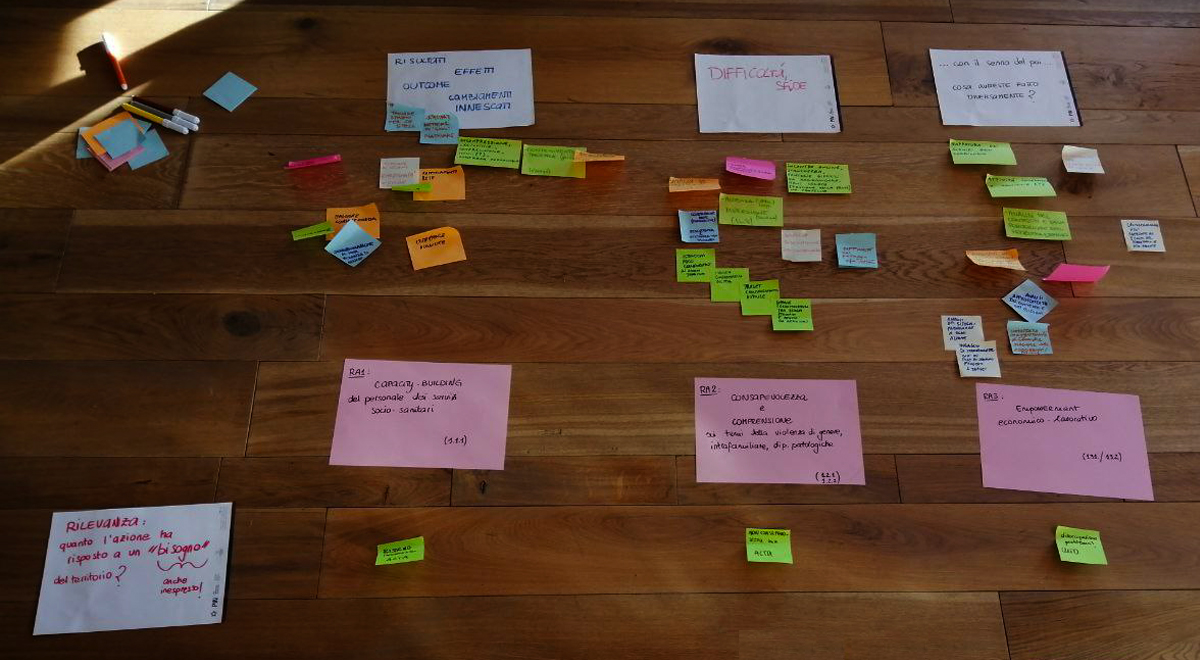The Outcome harvesting is an evaluation methodology that allows to explore the intended and unintended, positive and negative outcomes triggered by an intervention of its beneficiaries and main stakeholders. Rather than comparing the planned outcomes with the achieved ones, the Outcome Harvesting collects evidence of outcomes defined as the changes in behaviour, practices, relationships and actions of actors influenced by a change agent.
The main reference on this methodology is the publication by Ricardo Wilson-Grau and Heather Britt “Outcome Harvesting” (Ford Foundation, 2013) that is meant to enable evaluators, grant makers, and managers to identify, formulate, verify, and make sense of outcomes. As the authors explain, the Outcome Harvesting allows to analyse the outcomes of a project from many different perspectives. In particular it allows to address the key learning questions of an intervention; identify, formulate, analyze and interpret intended and unintended outcomes; develop a thorough understanding of the process of changes triggered by the intervention; determine the project contribution to the outcomes and estimate the importance of the outcomes.
The methodology is also useful to test the validity of the project Theory of Change by opening the “black box” of the path towards changes and to identify and analyze the main bottlenecks that hamper the project. The latter helps in formulating recommendations to improve the implementation of future projects.
